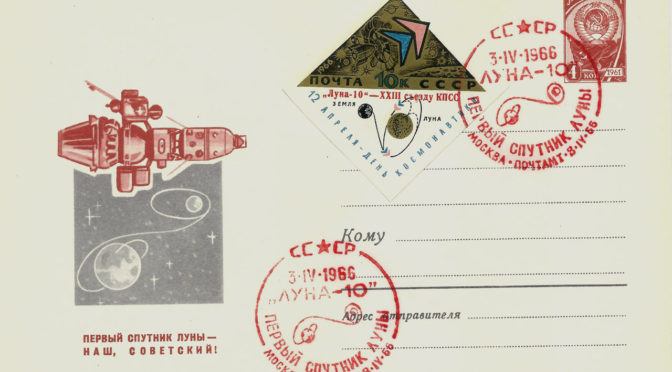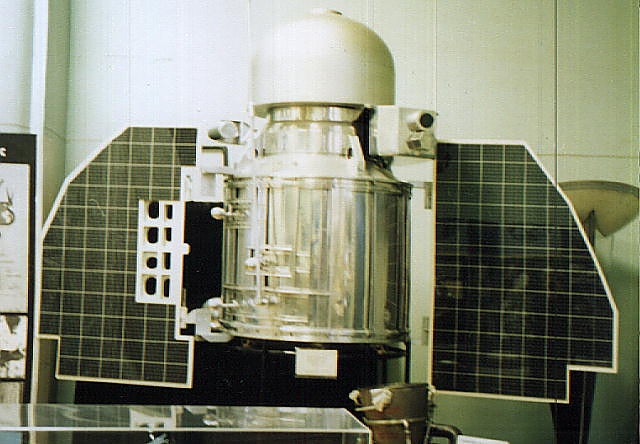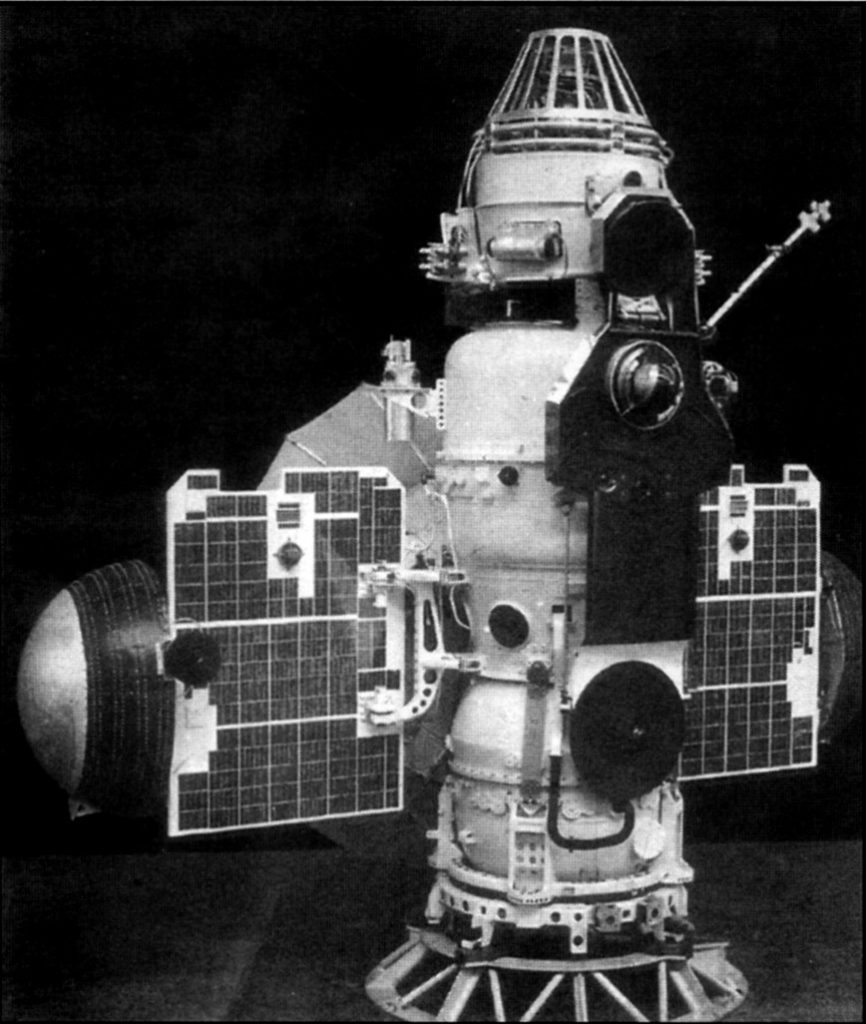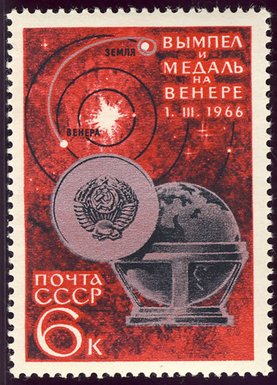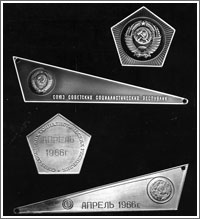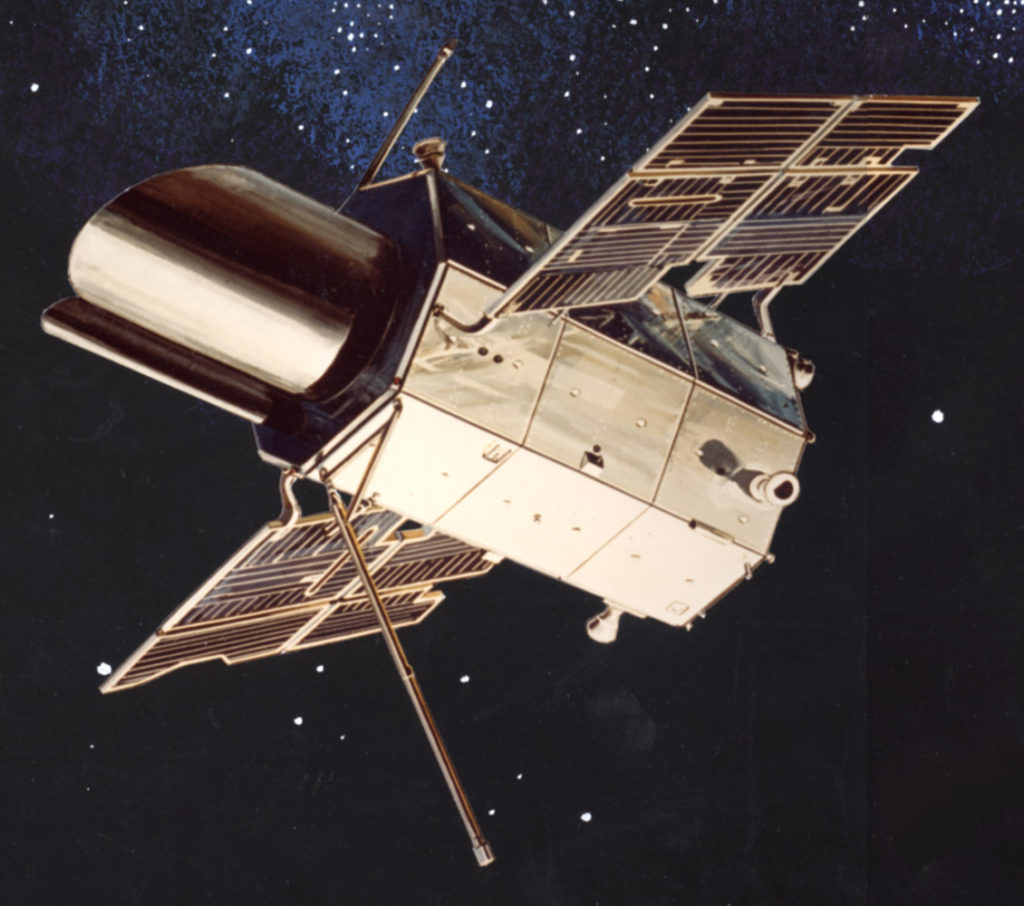
by Kaye Dee
While manned spaceflight always grabs the headlines, the past month or so has seen some fascinating, if not always successful, attempts at planetary and lunar exploration and the launch of a new space observatory. The failures of some of these missions remind us that space exploration is hard and success is never guaranteed…
Still Unable to Lift the Veil of Venus
Launched just days apart back in November last year, Soviet Venus probes, Venera 2 and 3 were due to arrive at the Earth’s mysterious, cloud-veiled sister planet at the beginning of March, but both seem to have failed just on the verge of success.
As early as February 1961, the USSR commenced its attempts to explore Venus with the Venera (Russian for Venus) 1 probe. Although Venera-1 flew past Venus at a distance of 100,000km on 19 May 1961, no data were received, due to a communications failure. According to my friends at the Weapons Research Establishment, following that mission there may have been several failed attempts by the USSR to launch missions to Venus, before Venera 2 and 3 were successfully sent on their way back in November.
(top) Venera 1, the USSR's first Venus probe and (bottom) its official follow on, Venera 2. I wonder how many unannounced failures lie between these two missions?
According to various news releases from the Soviet news agency TASS, the two spacecraft were intended for different exploration missions. Venera 2 was planned to fly past the sunlit side of Venus and examine its enigmatic clouds. The spacecraft was equipped with cameras, a magnetometer and a variety of instruments to measure the radiation environment in space and at Venus. Valuable data on the interplanetary space environment was transmitted back to Earth during the flight to Venus.
All Venera 2's instruments were activated for the flyby on 27 February, at a distance of 14,790 miles. While the instruments were operating, the radio had to be shut down, with the probe storing their data in onboard recorders. The plan was for the stored data to be transmitted it to Earth once contact was restored. However, it seems that ground controllers in the USSR were unable to re-establish communications with the spacecraft after the flyby. Attempts to re-establish contact with Venera 2 ceased on March 4, but if communication with the spacecraft can be made at some future point, Soviet scientists believe that it may still be possible to recover some of the flyby data.
Touchdown?
Unlike Venera 2’s flyby (similar to those of Mariner 2 at Venus and Mariner 4 at Mars), Venera 3’s ambitious goal was to land a small capsule of instruments on the surface of Venus, hopefully to unlock at least some of the secrets hidden beneath its veil of clouds. Because some scientists believe there could be life on Venus, the USSR claims the lander was “sterilised” before its departure from Earth so that would not contaminate the Venusian atmosphere or surface with any microbial terrestrial life.
The Venera 3 lander was a metal sphere about 35 inches in diameter, which carried instruments to measure atmospheric temperature, pressure and composition, and light levels at different altitudes, as well small metal Soviet emblems. Interestingly, because some scientists still hold the view that Venus could be a water world, the lander was designed to be able to float and carried a motion detector, which could determine if it had actually landed in water and was rocking in the waves.
Venera 3 was similar to its sister-probe Venera 2. But look closely and you can see the landing capsule at the bottom of the spacecraft
Weighing 884lbs, the lander was designed to drop through Venus’ atmosphere on a parachute, transmitting data from its instruments directly back to Earth, while the rest of the Venera 3 spacecraft went into orbit around Venus to take other scientific measurements. However, like its sister probe, contact with Venera 3 was lost as it approached Venus. Tracking data indicates that the landing capsule entered the Venusian atmosphere on 1 March, although no telemetry was received from the lander. Nevertheless, the Venera 3 lander has become the first manmade object to impact another planet, which is an achievement in itself. The reasons for the failure of the two Venera spacecraft remain a mystery, although some experts believe that the thick Venusian atmosphere may have had something to do with it.
Newly-released Venera 3 stamp (thanks Uncle Ernie!). It shows the Soviet medal and pendant depicting the planet Earth that were carried on board the lander
Advancing the Soviet Lunar Programme
Despite the problems with its Venus programme, the USSR’s lunar programme seems to be going from strength to strength. Following on from the historic soft landing on the Moon with Luna 9 in February, Luna 10 marks another step forward, becoming the first spacecraft to go into orbit around the Moon. (Of course, it’s obvious that this feat was timed to occur during the 23rd Congress of the Communist Party of the Soviet Union, but I’m sure it was also deliberately planned to upstage the United States’ Lunar Orbiter program, which is due to commence later this year, with a series of spacecraft that will photograph and map the Moon in advance of the Apollo programme).
Luna 10, the first spacecraft to orbit the Moon
A pre-launch photograph of Luna 10 indicates that its design is very similar to that of Luna 9, although the instrument capsule on top has a different shape. Launched on 31 March, Luna 10 went into lunar orbit three days later. Its elliptical orbit approaches as close as to the lunar surface as 217 miles, with its farthest point at 632 miles, and takes just under three hours. The 530lb spacecraft is battery powered, rather than using solar panels, so it is unclear how long it will keep sending data back to the Earth, but at present it is producing a regular stream of information about the space environment in the vicinity of the Moon, that will help us understand how safe (or otherwise) it will be for the first cosmonauts and astronauts to explore cislunar space and the Moon itself.
Close up view of a model of the Luna 10 instrument capsule and the small Soviet metal pendants that it carried onboard
Scientific Instruments aboard Luna 10 include a gamma-ray spectrometer, a magnetometer, a meteorite detector, instruments for solar-plasma studies, and devices for measuring infrared emissions from the Moon and radiation conditions of the lunar environment. However, it is not clear whether the probe is actually carrying a camera to photograph the Moon’s surface. Preliminary data released by the Soviet Union indicates that there are higher concentrations of meteoritic dust in the vicinity of the Moon than in interplanetary space, as well as “electron fluxes” that are “70 to 100 times more intense than the cosmic ray background”.
First day cover commemorating the Luna 10 mission. Soviet space covers are masterpieces of propaganda, with the stamp design, envelope design and postmark all re-inforcing the message of Communist space achievement!
A Propaganda Serenade from the Moon!
As the Space Race heats up, the Soviet leadership is always ready to exploit propaganda opportunities associated with space exploration. To celebrate the CPSU Congress, a synthesised version of the Communist anthem “The Internationale” was broadcast live from Luna 10 to the congress on 4 April. (At least, it was claimed to be live: I wonder if Luna 10’s controllers actually used a pre-recorded version in case there were problems with the spacecraft? After all, it would be very politically embarrassing to have a failure of Soviet technology at such a high profile event for global Communism!)
Sky High Eyes on the Sky
The last mission I want to mention this month is NASA’s Orbiting Astronomical Observatory (OAO) 1, not least because this a major space project managed by a woman! Dr. Nancy Grace Roman, formerly a radio astronomer with the Naval Research Laboratory, joined NASA in 1959 and became Chief of Astronomy in NASA's Office of Space Science in 1960. She has a prestigious international reputation and was the first woman in an executive position at the space agency, where she has established the space astronomy programme.
Dr Nancy Grace Roman in 1962 with a model of another of her space observatory projects, the Orbiting Solar Observatory
The heaviest satellite yet launched by the United States (weighing almost two tons), OAO 1 was launched successfully on 8 April, riding to orbit on an Atlas-Agena D from Cape Canaveral. It carried 10 telescopes and other instruments capable of detecting ultraviolet, X-ray and gamma ray emissions to measure the absorption and emission characteristics of the stars, planets, nebulae from the visible to gamma-ray regions The observatory satellite was intended to give astronomers their first clear look at the heavens without the distorting effect of the Earth’s atmosphere and its results were greatly anticipated.
However, before the instruments could be activated, something caused a power failure that resulted in the mission being terminated after just 20 orbits. Because the spacecraft could not be controlled, its solar panels could not be deployed to recharge the batteries supplying the equipment and instruments on board the satellite. Although this is a blow to space astronomy, I’m sure the OAO programme will continue as future satellites are already in development.
NASA illustration of Orbiting Astronomical Observatory 1. While this satellite has failed, there will be future space observatories in this program

